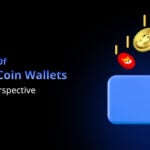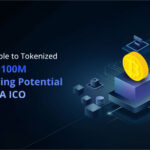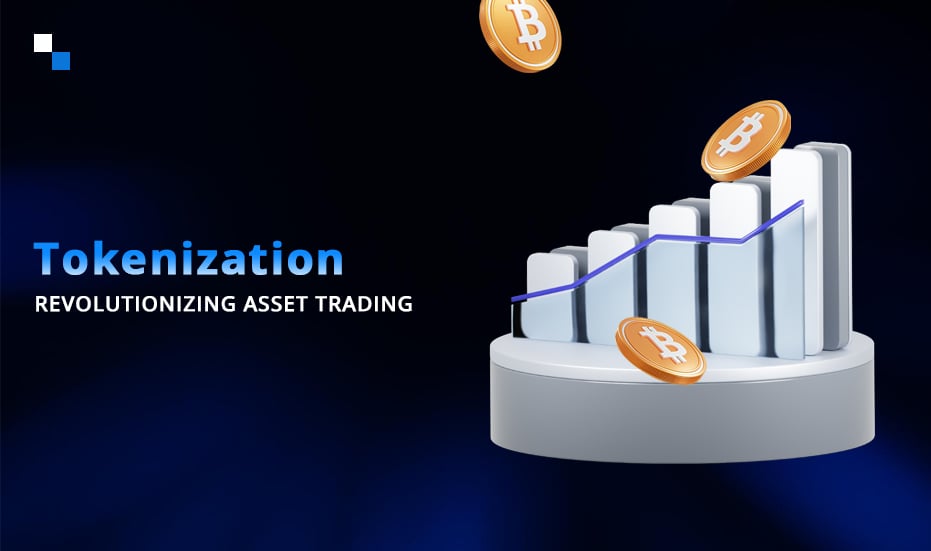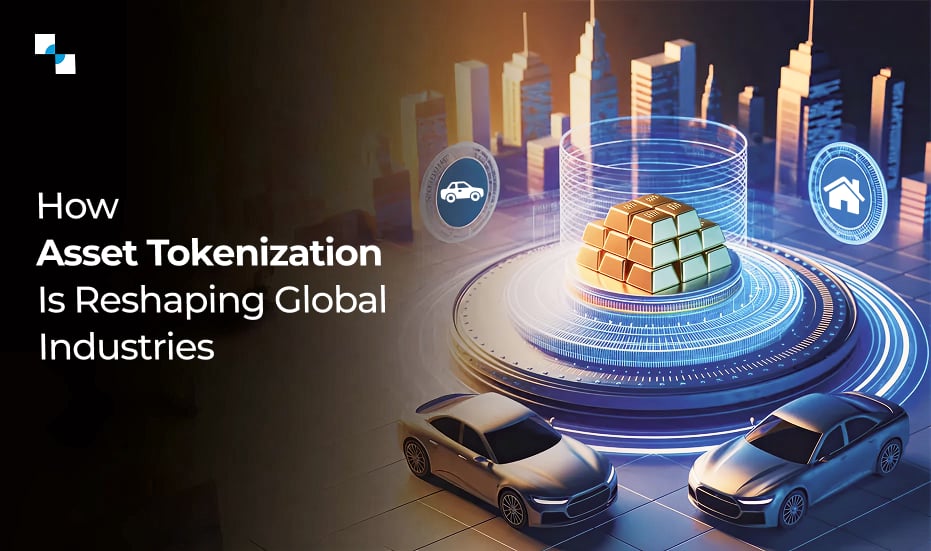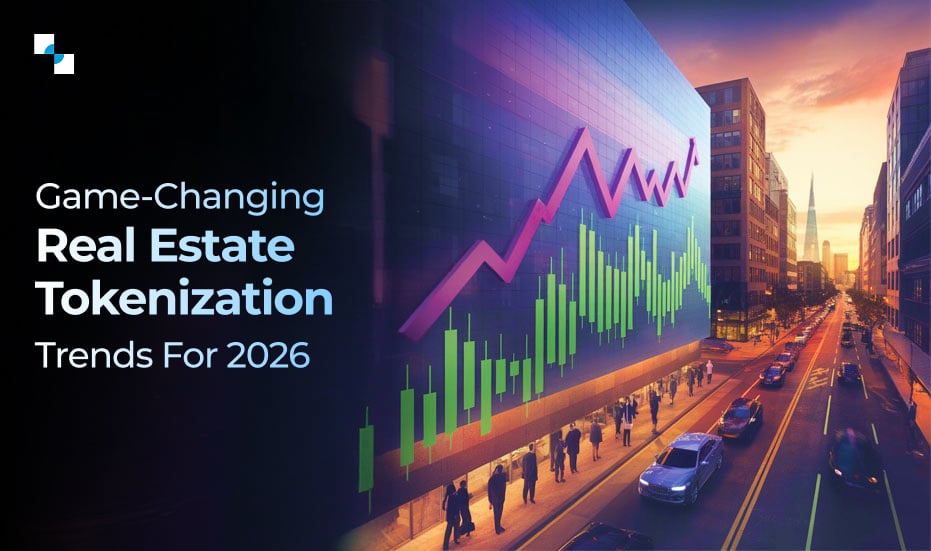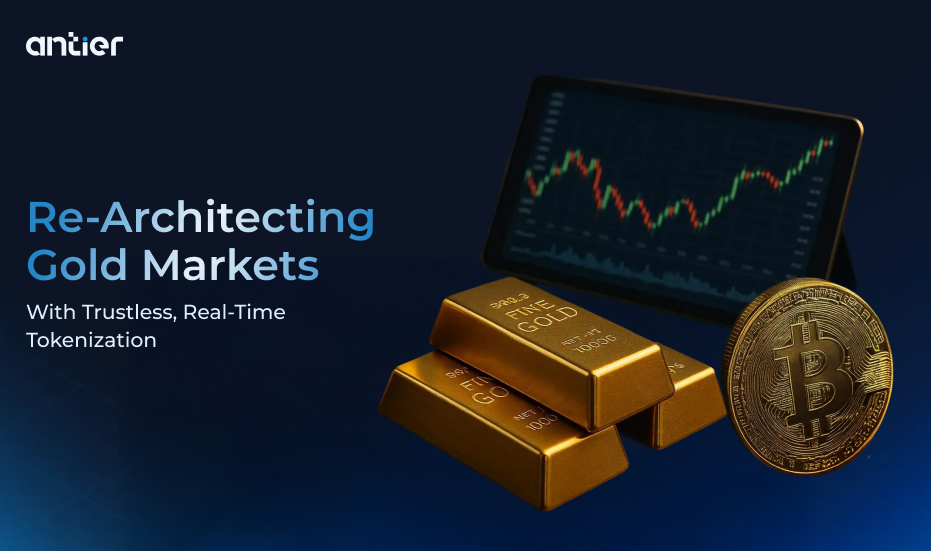Asset tokenization is fast emerging as one of the most transformative forces within the financial sector. By converting physical or digital assets into tradable tokens on a blockchain, tokenization opens up vast opportunities for investment, liquidity, and operational efficiency. As businesses and individuals continue to experiment with this technology, the impact on how we buy, sell, and trade assets is becoming ever more profound.
In this blog, we will delve deep into the intricacies of asset tokenization, offering real-life use cases, examining how tokenization is reshaping traditional markets, and exploring its implications for both investors and the broader financial ecosystem.
The Basics of Asset Tokenization
Asset tokenization involves representing real-world assets—such as real estate, stocks, commodities, or intellectual property—as digital tokens on a blockchain. These tokens are cryptographic representations of ownership rights and can be bought, sold, or transferred on decentralized platforms. This process allows for fractional ownership, enhanced liquidity, and lower barriers to entry for both buyers and sellers.
While the basic concept of asset tokenization is relatively simple, its implications and potential applications are vast. Traditional assets, which may have been illiquid or difficult to trade, can now be tokenized and exchanged on blockchain networks, leading to a complete overhaul of asset management and trading industries.
The Impact of Asset Tokenization on Buying, Selling, and Trading
Fractional Ownership and Enhanced Liquidity
One of the most significant impacts of asset tokenization is the ability to fractionalize ownership. For example, tokenizing real estate allows individuals to own a small fraction of a high-value property, opening up access to investments that would otherwise be out of reach for many people. Instead of needing to invest millions of dollars to buy a building or a luxury asset, individuals can purchase a fraction of it in the form of tokens, much like buying shares of a company.
Use Case:
A prominent example is RealT, a platform that tokenizes real estate properties. Investors can purchase fractions of properties in the form of ERC-20 tokens, which represent their share of ownership. The token holders receive dividends from the rental income generated by the property. This democratization of real estate investment opens up opportunities for smaller investors, providing them with exposure to high-value assets that were traditionally reserved for wealthy individuals or institutional investors.
This fractionalization also means that assets become more liquid. Instead of waiting for months or years to sell an illiquid asset like real estate, investors can now trade tokenized fractions on blockchain-based exchanges, allowing them to realize returns more quickly.
Broader Market Access and Inclusion
Tokenization breaks down geographical and institutional barriers, offering access to previously restricted or hard-to-reach markets. Traditional investments are often confined to specific markets or require intermediaries like brokers or banks. Asset tokenization enables direct, peer-to-peer transactions between buyers and sellers, with minimal friction.
Use Case:
In the world of art, the tokenization of high-value artworks has allowed individuals from anywhere in the world to invest in fine art, which historically has been a niche market for only the wealthy. Maecenas, an art investment platform, tokenizes artworks and enables fractional ownership, making art investment accessible to a broader range of individuals. Through tokenized shares of valuable pieces like works by Banksy or Picasso, investors can own a portion of a $20 million artwork, earning a return on their investments as the artwork appreciates.
The increased accessibility provided by tokenization leads to greater market participation. This results in a more dynamic market and better price discovery as more people engage with asset classes previously considered out of reach.
Efficient and Cost-Effective Transactions
Tokenizing assets reduces reliance on intermediaries such as brokers, banks, and lawyers. These traditional middlemen are often responsible for much of the cost and time delay in asset transactions. Blockchain technology automates many of these processes, reducing both transaction costs and time.
Use Case:
In the world of securities, tokenization allows for instant settlement and transfer of ownership. tZERO, a subsidiary of Overstock, has developed a platform for tokenized securities trading, enabling faster and cheaper trading of stocks and bonds compared to traditional stock exchanges. Tokenized securities are traded in real-time with the ownership transferred instantly, eliminating settlement delays that can take days in traditional finance.
By removing intermediaries and leveraging smart contracts, asset tokenization streamlines the entire buying, selling, and trading process, making transactions more efficient and less costly.
Global and 24/7 Markets
Traditional financial markets operate within specific hours, subject to time zones, and are influenced by local holidays and market events. Tokenized assets, on the other hand, can be traded on blockchain networks 24/7, allowing investors from different time zones to participate at any time.
Use Case:
Cryptocurrency markets like Binance and Coinbase already exemplify the advantages of a 24/7 trading environment. With tokenized assets, investors can trade not only digital currencies but also traditional asset classes like stocks, commodities, or real estate, whenever they wish. This flexibility creates a more inclusive market, where users from across the world can enter and exit positions at their convenience, making trading more dynamic and responsive to global events.
Transparency and Security
Blockchain’s inherent transparency and immutability provide an unparalleled level of trust in transactions. When assets are tokenized, the entire transaction history is recorded on the blockchain, providing a verifiable and tamper-proof ledger of ownership.
This feature is particularly advantageous for sectors like supply chain management, where knowing the provenance of goods is critical. Tokenization allows buyers and sellers to easily verify the authenticity and ownership history of an asset, reducing fraud and improving confidence in the marketplace.
Use Case:
In the diamond industry, Everledger is using blockchain to create a digital ledger that tracks the provenance of diamonds. By tokenizing diamonds, buyers can ensure that the diamonds they are purchasing are not only authentic but also ethically sourced. This level of transparency is invaluable, especially in high-value markets where trust is paramount.
Tokenization of Non-Traditional Assets
Beyond real estate, stocks, and art, asset tokenization is increasingly being applied to less traditional asset classes. These include intellectual property rights, carbon credits, and even luxury items like watches and jewelry.
Use Case:
In the case of intellectual property (IP), companies like IPwe are working on tokenizing patent portfolios. It enables patent holders to sell or license portions of their IP in the form of tokens, allowing fractional ownership of valuable patents. Investors or companies can then trade IP tokens on secondary markets, creating liquidity and enabling more efficient licensing and commercialization of intellectual property.
Tokenized DeFi and Smart Contracts
DeFi (Decentralized Finance) platforms are among the most innovative and exciting areas where tokenization has had a profound impact. Tokenized assets, combined with smart contracts, allow users to engage in decentralized lending, borrowing, and staking without the need for traditional financial institutions. This brings forth more autonomy and flexibility in managing assets.
Use Case:
MakerDAO, one of the most well-known DeFi platforms, allows users to deposit assets like ETH (Ether) and generate a stablecoin (DAI) that can be used for lending or trading. The smart contracts governing MakerDAO ensure that these tokenized assets are safe and operate within a decentralized, permissionless system. This functionality extends the impact of tokenization beyond traditional markets to decentralized financial ecosystems, offering users greater control over their investments.

Future Trends: Where Tokenization Is Heading
As blockchain technology evolves, so too will the applications of asset tokenization. The continued adoption of tokenized assets will likely see more sophisticated use cases, particularly as the regulatory environment adapts to the growth of blockchain-based markets.
Tokenization of Commodities:
The tokenization of precious metals like gold and silver is gaining traction, allowing for real-time, fractional ownership of these assets, which could revolutionize how commodities are traded globally.
Cross-Border Trading:
The interoperability of blockchain platforms will enable easier cross-border trading of tokenized assets, reducing friction and costs associated with international transactions.
Asset-backed Stablecoins:
Tokenized, real-world assets can be used to back stablecoins, providing a more secure and stable digital currency option for everyday transactions.
Conclusion
The impact of asset tokenization on buying, selling, and trading is transformative and wide-reaching. It enhances liquidity, fosters inclusivity, reduces transaction costs, and makes markets more efficient and transparent. Whether it’s real estate, art, intellectual property, or commodities, the ability to tokenize assets has opened up opportunities for investors and businesses in ways that were previously unimaginable. As blockchain technology continues to mature, we can expect to see even more asset classes tokenized, leading to a truly decentralized financial future.
